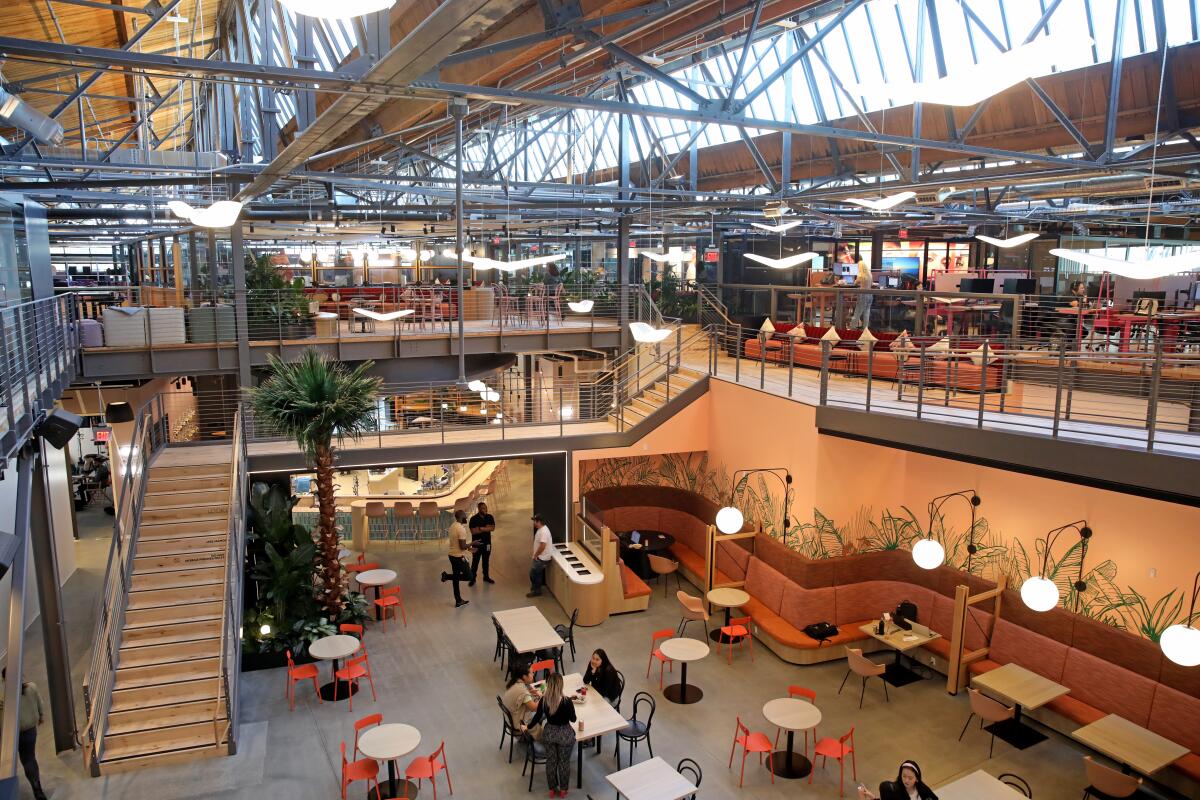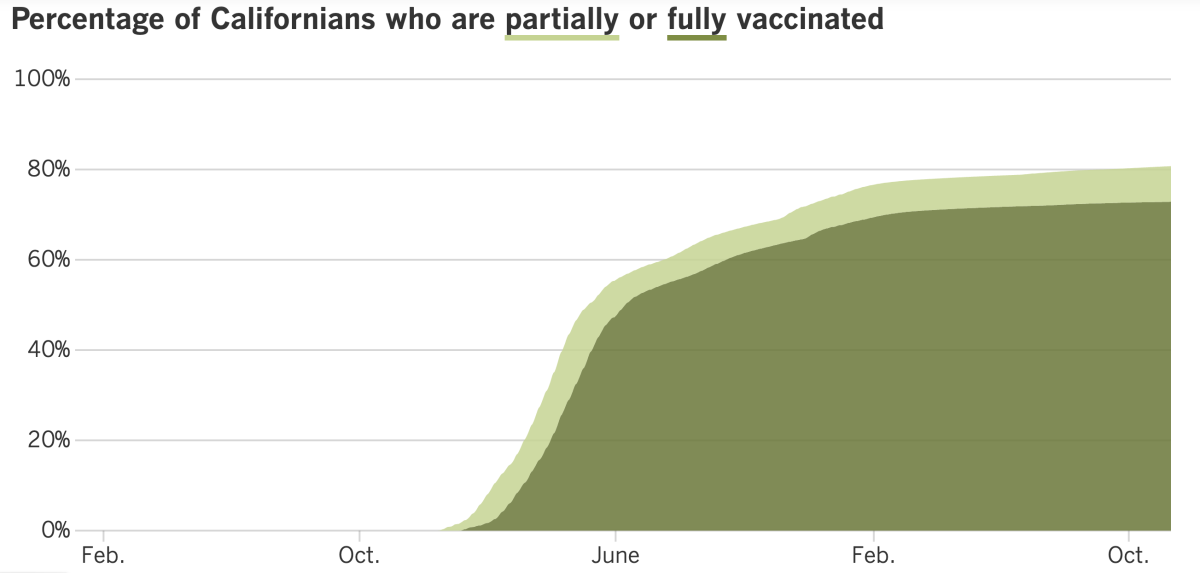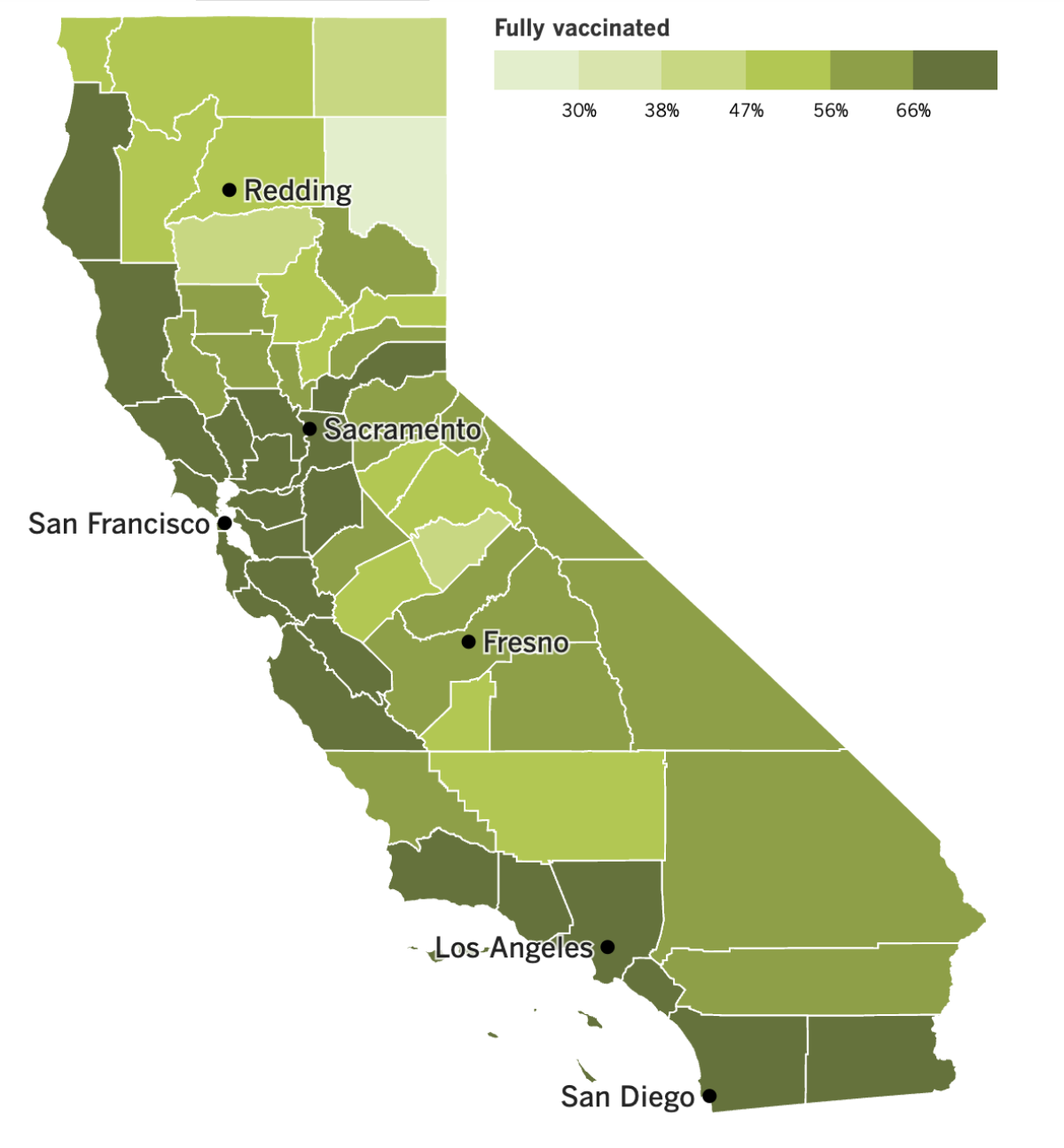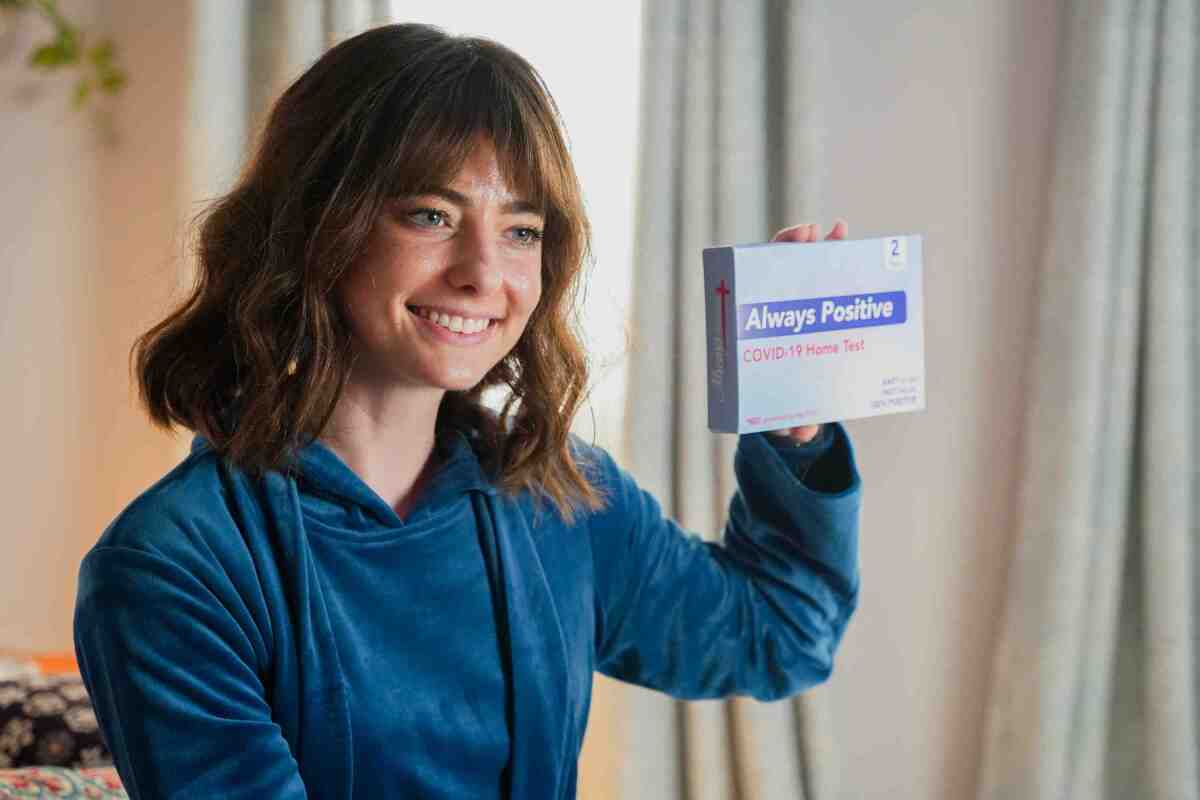Coronavirus Today: Is the Paxlovid rebound real?
- Share via
Good evening. I’m Karen Kaplan, and it’s Tuesday, Nov. 15. I’d like to wish you a happy Thanksgiving in advance since the newsletter will be dark next week. Here’s the latest on what’s happening with the coronavirus in California and beyond.
What do President Biden, Dr. Anthony Fauci, Dr. Rochelle Walensky and Stephen Colbert have in common?
All of them have experienced a case of “Paxlovid rebound.”
During one of his monologues on “The Late Show,” Colbert told viewers this was not exactly an exclusive club.
“I don’t know anybody who’s taken Paxlovid who didn’t get it again,” the comedian said. “It’s the hottest rebound since JLo tested positive for a second case of Affleck.”
Paxlovid rebound describes the condition of getting COVID-19, treating it with a five-day course of the antiviral pill, making a full recovery from the disease — and then testing positive for a coronavirus infection or seeing symptoms return a few days later. It’s not an official medical diagnosis, but as Colbert’s quip demonstrates, the general public sure sees it that way.
The Centers for Disease Control and Prevention first flagged this phenomenon in late May. The agency said recurrences were reported two to eight days after patients thought they’d recuperated.
It’s easy to see why Paxlovid came to be blamed for the relapses — people took the drug, and then they got COVID-19 a second time. But when one action is followed by another, it doesn’t necessarily mean the first one caused the second.
The CDC warned of this possibility in its health advisory: “A brief return of symptoms may be part of the natural history of SARS-CoV-2 (the virus that causes COVID-19) infection in some persons, independent of treatment with Paxlovid.”
And, indeed, researchers who have dug into the mystery have generated some credible exculpatory evidence, my colleague Melissa Healy reports.

One group had been tracking thousands of COVID-19 patients as they progressed through their illnesses. The researchers scoured their records and found 568 patients who had mild cases and were not treated with Paxlovid. Among that untreated group, 10% experienced a relapse of symptoms, and 12% tested positive for an active infection after they had tested negative.
Another report examined data from a 2020 clinical trial of potential COVID-19 treatments for adults with mild to moderate illnesses. Among 158 patients whose health was tracked for 28 days, 30% thought they had fully recovered, only to see their symptoms return after just two days. None of them were treated with Paxlovid, which hadn’t been invented yet.
Pfizer, which makes Paxlovid, reviewed data from nearly 2,000 patients who participated in clinical trials for the drug. The drugmaker found that 2.3% of study subjects who were randomly assigned to take Paxlovid suffered a relapse — but so did 1.7% of subjects who took a placebo.
Paxlovid has been available in the U.S. for nearly a year. When the Food and Drug Administration authorized it for emergency use in December, doctors and public health officials thought it could be a game-changer.
At the time, most COVID-19 therapies had to be administered via infusion in medical centers. Paxlovid pills, on the other hand, could be taken at home. And they worked better than molnupiravir, a similar antiviral pill made by Merck. In COVID-19 patients at high risk of severe illness or death, taking Paxlovid reduced the risk of both outcomes by almost 90%.
Federal officials worked hard to make the drug easy to get. Under the Biden administration’s “test to treat” initiative, patients could show up at a pharmacy, take a coronavirus test and leave with a five-day supply of Paxlovid pills — all without spending a dime. But the public hasn’t quite embraced the drug. A poll conducted this summer found that only 11% of people who’d had coronavirus infections in 2022 had received a Paxlovid prescription.
Some doctors are afraid that patients have been shying away from Paxlovid because of its PR problem. They could be depriving themselves of a lifesaving medicine, and for no good reason.
“Rebound is not a reason to not take Paxlovid,” said Dr. Michael Charness, who has studied COVID-19 rebounders in depth. Avoiding the drug to avoid a relapse isn’t a sound strategy, since “it’s clear some people will rebound anyway,” he said.
Dr. David Smith, an infectious-disease specialist at UC San Diego, made that point more emphatically.
“If people qualify for Paxlovid, they should take it. It’s a lifesaver. Period,” he told Healy. “I hate that rebound has been tagged as a Paxlovid effect.”
By the numbers
California cases and deaths as of 5:20 p.m. Tuesday:

Track California’s coronavirus spread and vaccination efforts — including the latest numbers and how they break down — with our graphics.
An office worth commuting to
If you’ve been working remotely since the pandemic shut down your office, what would it take to make you come back?
Would a coffee bar be enough of a lure? How about a fitness center and juice cafe? If you’re worried about wasting time commuting, would that be offset by a concierge service that would pick up your dry cleaning and run other errands for $5 an hour?
A growing number of companies are hoping amenities like these will entice their employees to give up the freedom and flexibility they’ve grown accustomed to in their home offices — and to do so willingly, my colleague Roger Vincent reports. Workers who are in the office under duress aren’t likely to perform at the top of their game.
That means companies will need to change their workplace vibe so it competes with a sunny spot in the living room or the cozy corner of a favorite cafe. Old-school cubicles just won’t cut it.
“We are really talking about treating the office as a destination, not an obligation,” said Elizabeth Brink, a workplace expert at the architecture firm Gensler.
Employers are aware they have their work cut out for them. More than half of those surveyed recently by the real estate brokerage CBRE said they’d like to see their workers spend more time in the office, but only 25% thought they’d do so voluntarily.
That helps explain why conference rooms are giving way to “innovation hubs,” where colleagues gather for brainstorming sessions. Break rooms are being replaced by cafes that invite workers to bring their laptops.
New categories of workspaces include “maker spaces” stocked with tools and materials to create new products; quiet zones called “libraries” where technology is not allowed; outdoor areas with comfortable seating and strong Wi-Fi; and mental health rooms where employees can decompress with lush plants and aromatherapy.
People who’ve become used to working in isolation may need places to retreat to when they’re in the office, Brink said.
“It can be a great experience to come back in, talking and reconnecting with people, but it can be a lot emotionally for people,” she told Vincent. “It can create stress.”

If this workplace vision sounds too good to be true, David Greenberg would beg to differ. Green is the chief executive of L’Oréal USA, the cosmetics company whose West Coast headquarters in El Segundo actually have a fitness center, juice cafe, concierge service and coffee bar (which sometimes serves alcohol as well). There’s also a restaurant, an outdoor park-like workspace and a garden that grows vegetables employees can take home.
L’Oréal is “in an industry that’s very much people-driven,” so it places a high value on face-to-face collaboration, Greenberg explained. Workers are required to be in the office at least three days a week to get the “necessary engagement, creativity, sharing and learning from each other” that the company needs to thrive, he said.
Even with so many perks, most employees still work remotely twice a week. It kind of makes you wonder what a company would have to do to tempt workers to come in full time.
Companies are wondering this too, Brink said.
“This is a time where there is a lot of experimentation going on,” she said. “We are really trying to figure out what is going to be the new workplace experience.”
California’s vaccination progress


See the latest on California’s vaccination progress with our tracker.
Your support helps us deliver the news that matters most.
In other news ...
Thanksgiving is still more than a week away, but coronavirus cases are already on the rise in California as new Omicron variants play a bigger role in the outbreak.
Across the Golden State, health officials tallied 59 cases per 100,000 residents over the week that ended last Tuesday. That was 10% higher than it had been the previous week. What’s more, the number of hospitalized patients with coronavirus infections increased by 8%.
Los Angeles County was a big factor in the statewide increase. As of Thursday, the county saw its daily caseload increase 24% week-to-week. That translates to 90 cases per 100,000 residents per week. Hospitalizations here rose by 11%.
“We’ve really been slowly but steadily increasing since Nov. 1,” said county Public Health Director Barbara Ferrer. If the county’s case rate climbs from 90 to 100 or more, officials will go back to strongly recommending the use of face masks in indoor public settings.
Ferrer didn’t wait to make another prevention recommendation: getting an updated booster shot. Since the bivalent boosters became available in September, just 12% of eligible county residents have received one. Even among senior citizens, the group with the highest vaccination rate in general, only 1 in 4 has received a bivalent booster.
“This low number is worrying, especially given the possibility of a winter surge fueled by new strains of the virus that are very infectious,” Ferrer said. “Those over 65 remain at elevated risk for severe illness from COVID-19. And for many older people, it has been months since their last booster.”
Statewide, only 13.3% of eligible Californians have rolled up their sleeves to get an Omicron-targeting booster shot. That’s better than the nationwide figure of 10.1% but not by much.
The new boosters were specially designed to recognize the BA.5 subvariant that was responsible for the second Omicron surge this spring and summer. BA.5 is still the most common strain in circulation in the U.S., but as of Tuesday it accounts for just 29.7% of specimens, according to estimates from the CDC. The BA.5 descendants known as BQ.1.1 and BQ.1 are hot on its heels, with market shares of 24.1% and 20.1%, respectively.
Moderna said Monday that both of its Omicron-targeting vaccines — the one that targets BA.5 as well as one used in Europe that targets the older BA.1 strain — appear capable of neutralizing BQ.1.1. That’s based on preliminary data from about 40 people who participated in its clinical trials of the updated vaccines.
The company also says its analysis suggests the bivalent booster available here is superior to the original formulation when it comes to protecting recipients against BA.5 and the related BA.4 subvariant, which shares the same spike protein.
Walensky is on a mission to convince more pregnant people to get the updated boosters. Her motivation: A report published last week by the CDC that shows that, among all groups, infants under 6 months now face the second-highest risk of being hospitalized with COVID-19.
Senior citizens are still the most likely to require hospitalization, the report found. Between Dec. 19 and Aug. 31, the hospitalization rate averaged 39.4 admissions per 100,000 people 75 and older, and 13.8 per 100,000 adults 65 to 74. For the youngest infants, it was 13.7 per 100,000 during the same 8½-month period.
In July and August, the hospitalization rate among these babies was actually higher than for seniors 65 to 74, according to the report, which was based on data from 13 states.
Infants under 6 months are too young to be vaccinated against COVID-19, but they can get some protection from their mothers, Walensky said.
“We’re seeing more and more of those younger babies getting hospitalized,” she said. “That’s really where we’re trying to do some work now because we think we can prevent those by getting mom vaccinated.”
The World Health Organization has some encouraging news. Globally, the number of new coronavirus cases during the week that ended Nov. 6 fell 15% compared with the previous week, to just over 2.1 million. In addition, the number of weekly COVID-19 deaths dropped by 10%, to around 9,400.
If that doesn’t sound all that significant, consider this: In February, COVID-19 deaths topped 75,000 in a single week. The current mortality rate is 90% lower than it was back then.
“We have come a long way, and this is definitely cause for optimism,” said Tedros Adhanom Ghebreyesus, the WHO’s director-general. “But we continue to call on all governments, communities and individuals to remain vigilant. Almost 10,000 deaths a week is 10,000 too many for a disease that can be prevented and treated.”
Your questions answered
Today’s question comes from readers who want to know: After getting Evusheld, how long should I wait to get a booster shot?
For those who need a reminder, Evusheld is an antibody cocktail for adolescents and adults whose immune systems need extra help fighting off the coronavirus. It’s delivered as a pair of injections, like COVID-19 vaccines and boosters. The antibodies are made in a lab and designed to work just like the antibodies a healthy immune system would make after being exposed to the coronavirus.
Evusheld is not a substitute for COVID-19 vaccines or boosters. And according to the CDC, there’s no reason to wait if you’re due for a dose.
“COVID-19 vaccination does not need to be delayed following receipt of monoclonal antibodies,” the agency says.
People who’ve received Evusheld may produce fewer antibodies in response to vaccination, researchers have found. But the decline is small, and it may not be enough to make a real-world difference for patients.
“The balance of benefits vs. risks favors proceeding with vaccination,” the CDC says.
Although Evusheld doesn’t affect when you can get a dose of COVID-19 vaccine, the reverse is not true. The FDA’s emergency use authorization for Evusheld says patients should hold off on taking it until at least two weeks have passed since their most recent vaccine dose.
We want to hear from you. Email us your coronavirus questions, and we’ll do our best to answer them. Wondering if your question’s already been answered? Check out our archive here.
The pandemic in pictures

We’ve spent enough of this pandemic feeling angry, frustrated, physically sick and profoundly sad. If you ask me, we’re way overdue for a laugh at COVID-19’s expense.
The good folks at “Saturday Night Live” have delivered in spades with a mock commercial that presents the disease as the perfect remedy for the burned-out among us who need to take a time out from life.
“Are you feeling tired and worn down? Sick of the endless grind at work? Exhausted by your family, desperate for some peace and quiet?” the announcer asks in a voiceover. “Then ask your doctor about COVID.”
That’s followed by an enthusiastic testimonial from the pajama-clad customer in the photo above. “I needed a break, just some time away from everyone,” she said. “So my doctor suggested I get COVID, and it was the greatest week of my life.”
Like any pharmaceutical ad, this fake one contains a brief disclaimer: “Side effects of COVID include having COVID, which is still kinda bad, but doesn’t it seem different now?” It’s hard to imagine a better encapsulation the Omicron-era zeitgeist.
The two-minute, 30-second video has tons of jokes and sight gags that I haven’t spoiled here. Take a break from your email and click the link for the video.
You’re welcome.
Resources
Need a vaccine? Here’s where to go: City of Los Angeles | Los Angeles County | Kern County | Orange County | Riverside County | San Bernardino County | San Diego County | San Luis Obispo County | Santa Barbara County | Ventura County
Practice social distancing using these tips, and wear a mask or two.
Watch for symptoms such as fever, cough, shortness of breath, chills, shaking with chills, muscle pain, headache, sore throat and loss of taste or smell. Here’s what to look for and when.
Need to get a test? Testing in California is free, and you can find a site online or call (833) 422-4255.
Americans are hurting in various ways. We have advice for helping kids cope, as well as resources for people experiencing domestic abuse.
We’ve answered hundreds of readers’ questions. Explore them in our archive here.
For our most up-to-date coverage, visit our homepage and our Health section, get our breaking news alerts, and follow us on Twitter and Instagram.




